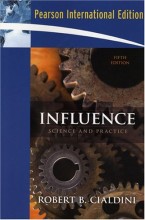Summary: Neuropsychological Assessments: Articles
- This + 400k other summaries
- A unique study and practice tool
- Never study anything twice again
- Get the grades you hope for
- 100% sure, 100% understanding
Read the summary and the most important questions on Neuropsychological Assessments: Articles
-
1 The psychological report: A Review of Current Controversies
-
1.1 Length
-
What is the length of a report?
- the average report is 5-7 pages.
- The length depends on the setting, referral source, and question i.e.
- Brief (1-2 pages), Normal (2-10 pages), Extensive (10-50 pages)
-
1.2 Readability
-
Why is it important that reports must be readable?
- They are consumed by other health professionals, clients, family, schools, etc.
- Avoid jargon to make it easier for other parties to comprehend.
-
What are the reasons for incomprehensibility of reports?
- focus on test scores instead of patients everyday abilities and experiences.
- clinicians expect that everyone understands the jargon.
- reports with jargon are more time-efficient
[avoid jargon, talk to patients and family members, short sentences, as concrete advise as possible] -
1.3 Acknowledging Presence of Poorly Validated Measures
-
should non/questionable-validated measures be used in test batteries?
- it should be noted if the tests were questionable, and why the assessor used them
- results of such test should be mentioned with caution
- non-integrated hypothesis reports read like test results, and they should take extra care with non-validated measures.
- integrated reports use multiple information sources, and non-validated measures are one of many informational sources for answering the hypothesis.
-
1.4 Use of Computer-Based Narratives
This is a preview. There are 2 more flashcards available for chapter 1.4
Show more cards here -
What is the greatest controversy when accepting the CBTI?
- The copy-paste of large parts of the CBTI results
- Inaccurate results will be presented as accurate in the report
- It is unethical
-
1.5 Inclusion of Test Scores
-
Should test scores be included in reports?
In favour- helpful for other psychologists
- scores indicate facts, and are understood by everyone.
- give both supporting as non-supporting evidence, and the clinician can be held responsible more easily
- is relevant information
- make interpreting follow-up tests easier
Opposed- scores should not be given to non-trained persons
- data should be guarded
- some data like IQ is understandable for the population, and can be easily misinterpreted by non-trained individuals at school, family or work setting.
- even trained individuals can misinterpret the results as they do not take into account things like behaviour, culture, motivation, and malingering.
-
Ethical consideration for test score includement
- clients are allowed to share the report, and information of the patient can be shared to thirds, which if including sensitive data, may harm the patient
[The ethical dilemma is between the clients rights, and the clinicians ethical end legal responsibilities. ] -
The decision to append test scores depend on?
- the referral source
- does the source expect the results?
- Is the report for a qualified person? - Qualitative vs quantitative
- qualitative are more likely to not append scores compared to quantitative - Are the scores easily misinterpreted?
- Test scores must be released if the client asks for them
- the referral source
-
1.6 Integration of Reports
-
Integrated vs non-integrated reports
Non-integrated- rely heavily on test scores
- present conclusions test by test
- ignore contradictions between tests
- minimal time spend discussing the meaning for the patient
Integrated- involve data from multiple assessment methods
- multiple measures are used for a single conclusion
- rely on clinical judgement
- understanding results for the patient
-
1.7 Inclusion of Client Strengths
This is a preview. There are 1 more flashcards available for chapter 1.7
Show more cards here -
Why to include patients strengths in reports?
- wil give patients more hope and a positive view
- strengths may be used to overcome deficits
- reduces the risk of overpathologizing the patient
- client/patient reads the report, and a only negative report may demoralize and harm the patient. is that ethical?
- Higher grades + faster learning
- Never study anything twice
- 100% sure, 100% understanding






























